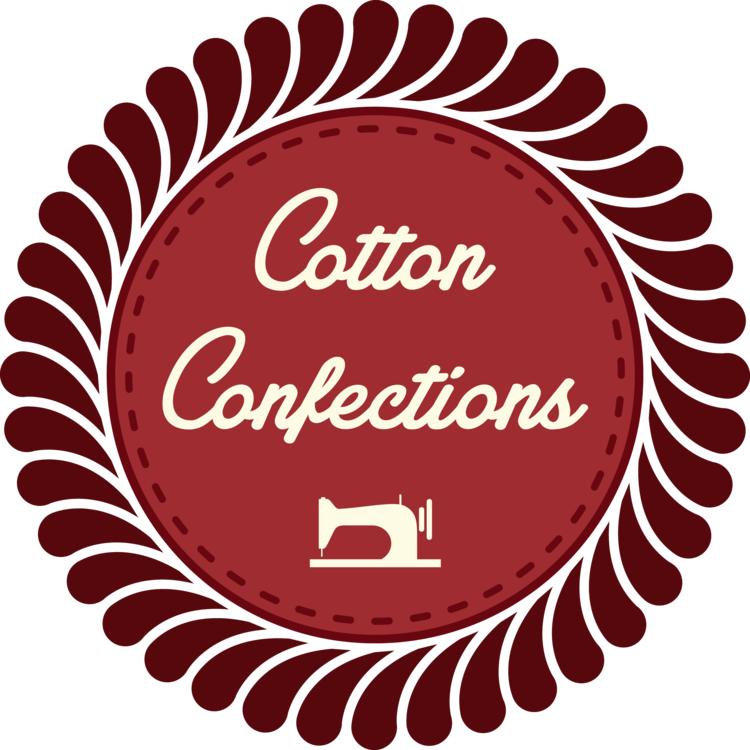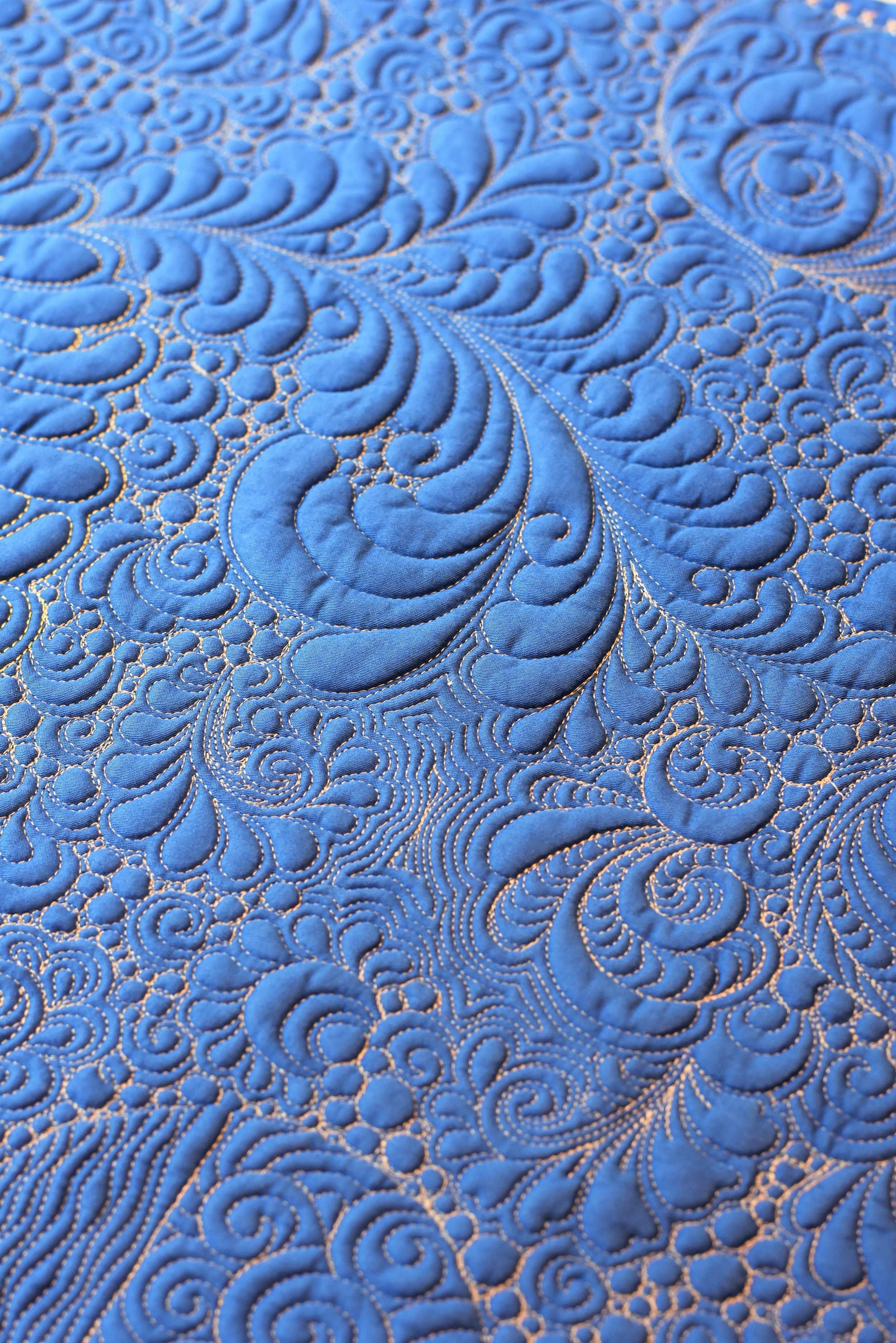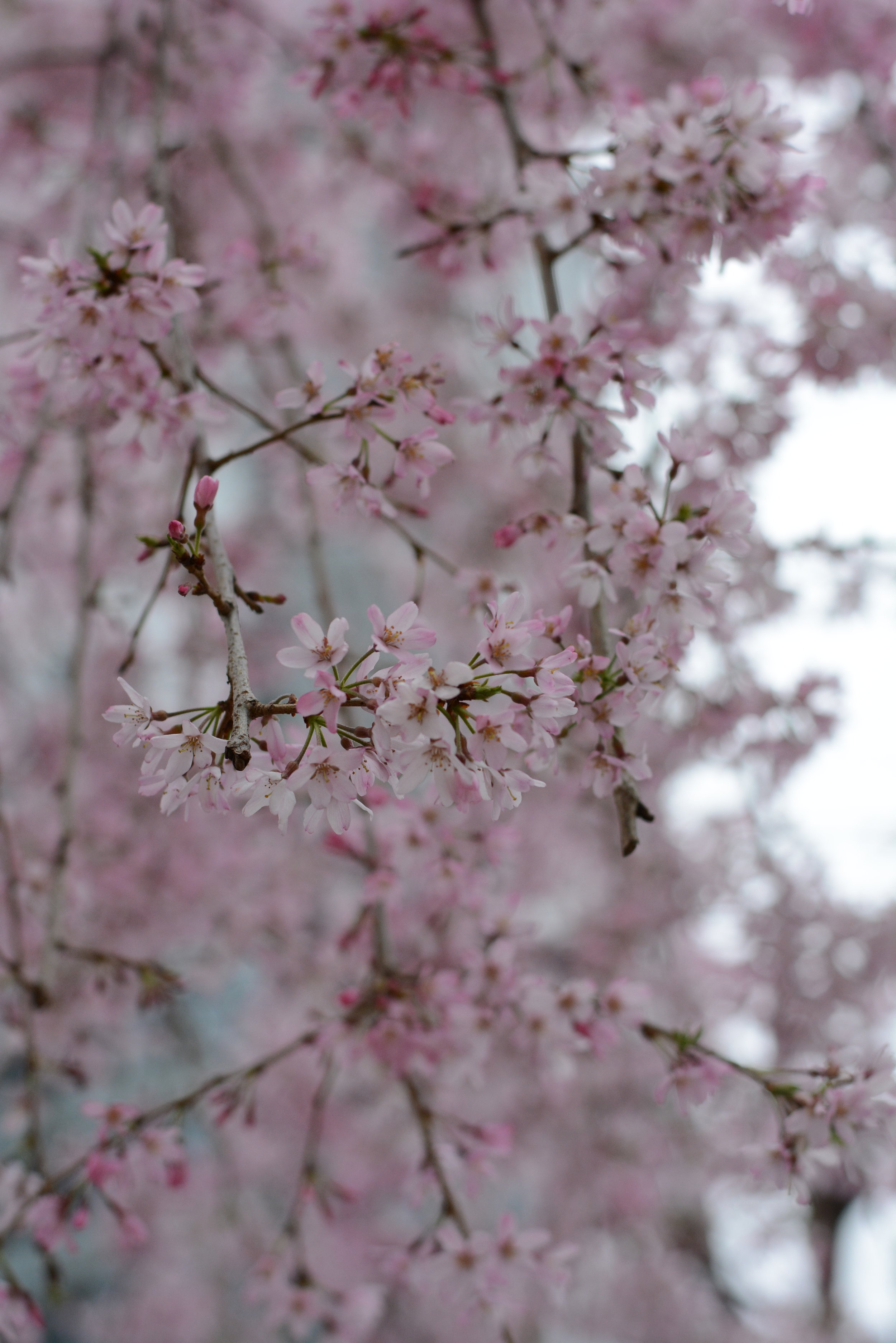Since I opted for wool batting (Hoobs Heirloom Wool) for this wall quilt, when I got it back from the longarmer, the quilt was lofty, did not lay flat and the blocks/applique designs did not really “pop” because the background not densely quilted. Once I realized the issue. I started ripping, and refilling/filling the background.
The quilt looked much better now! All I need is to make a sleeve and hang it somewhere. It is measured 61" x 74" and is consisted of 21 blocks:
1. Lone Star – strip pieced, with redwork hand embroidery in the background
2. Needle-turned as You Go Applique block from Elly Sienkiewicz’ book Precuts and Plenty, Pattern #15, page 102
3. Dresden Plate – hand appliqued to the background
4. Rolling Star #1 (my own drafting as shown here)
5. Rolling Star #2 (variation)
6. Rolling Star #3 (different color)
7. Flying Geese
8. Mariner’s Compass – my own drafting; paper pieced
9. Sunburst – my own drafting; hand pieced
10. Log Cabin
11. Feather Star – my own drafting
12. Baltimore applique – based on Elly Sienkiewicz’ book Baltimore Beauties and Beyond Vol. 2 Pattern #4, page115; with my own twist on the corner flowers design. Done in Appliquick + glue method and hand stitched to the background fabric.
13. Baltimore applique – based on Elly Sienkiewicz’ book Baltimore Beauties and Beyond Vol. 1 Pattern #21, page144. Done in water soluble freezer paper + glue method and machine stitched to the background fabric.
14. School House
15. Cross – English Paper Piecing
16. Keep Calm and Sew On – Machine Applique (turned edge for the pin cushion, raw edge for the letters); my own design
17. Swans – machine applique turned edge; my own design
18. Yankee Pride/Saw Tooth Star Variation – my own drafting
19. Swoon – my own drafting to an 8” block
20. Star Variation – my own drafting
21. Hexagons – hand stitched panel to fill in the space left…
There are tons of techniques involved in making this sample quilt. So it truly a learning quilt for me! It’s truly a memorable piece of work!




















